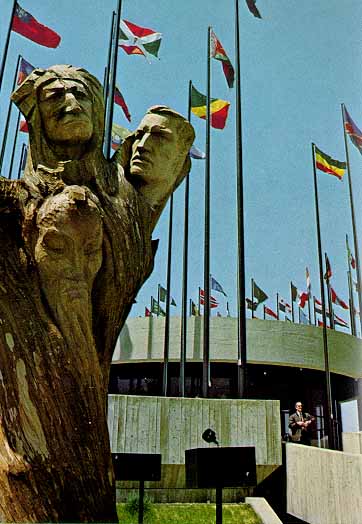United Nations Pavilion
The United Nations pavilion was a circular structure of concrete and steel and surrounded by a forest of giant aluminum masts flying the flags of the 122 member nations. Its main exhibition hall offered visual and printed information of the UN's history and numerous commitments and accomplishments throughout the world. An exhibit showed the United Nations charter and the many prestigious signatures it received at San Francisco. There was also a post office inside which sold United Nations stamps.Downstairs was a cinema, which showed on a screen 48 x 11 feet, the acclaimed three-screen Academy Award winning film "To Be Alive" that was originally shown at the New York 1964 World's Fair. It was an essay on children growing up in various parts of the world.

| The Tree of Life outside the United Nations pavilion. |
Outside the pavilion's entrance was the Tree of Life. A 150 year-old chestnut tree, 17 feet high and weighing three tons, was pulled from the earth, roots and all, and hollowed out by fire. Joseph "Peppi" Rifesser, a famous woodcarver from Italy carved on the trunk five faces representing peoples of five continents. The haunting visages were a vibrant pleas for equality and unity among men. Nearly everyone carrying a camera who visited the pavilion photographed the tree.